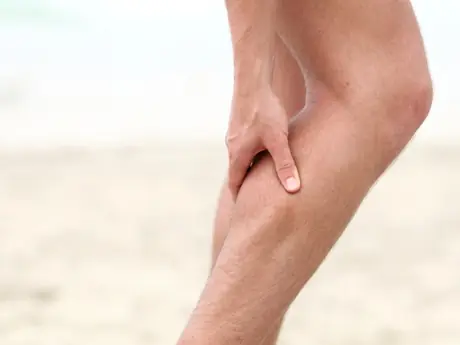For most runners, an increase in pace of 15 to 30 seconds per mile faster than their regular "conversational" long-run pace is perfect for their Marathon Move. Again, it's not an all-out race to the finish but just a strong effort for the final part of your long run.
More: 4 Marathon-Specific Long Run Workouts
If done correctly, you'll find that you are able to increase your pace and still feel comfortable for the total time you hope to complete the last 4 miles of the marathon. This is a good sign that you're ready for a successful marathon. And, Marathon Move long runs leave you exhilarated and "pleasantly tired" with a sense of accomplishment, which boosts motivation for the race.
Here's a sample of how to build your Marathon Move:
| Weeks until Marathon | 3:29 marathoner (8-minute pace) | 4:22 marathoner (10-minute pace) | 5:14 marathoner (12-minute pace) |
| 11 | 18 to 20 miles with a 16-minute Marathon Move | 14 to 16 miles with a 10-minute Marathon Move | 10 to 12 miles with a 12-minute Marathon Move |
| 9 | 20 to 22 miles with a 24-minute Marathon Move | 16 to 18 miles with a 20-minute Marathon Move | 12 to 14 miles with a 24-minute Marathon Move |
| 7 | 20 to 22 miles with a 24-minute Marathon Move | 18 to 20 miles with a 30-minute Marathon Move | 14 to 16 miles with a 36-minute Marathon Move |
| 5 | 20 to 22 miles with a 32-minute Marathon Move | 18 to 20 miles with a 40-minute Marathon Move | 16 to 18 miles with a 48-minute Marathon Move |
| 3 | 18 to 20 miles with a 32-minute Marathon Move | 16 to 18 miles with a 40-minute Marathon Move | 14 to 16 miles with a 48-minute Marathon Move |
Coach's Notes
Who's this workout for?
The Marathon Move long run works especially well for the runner who has proven she can finish a marathon and now wants to finish faster. Beginning runners can also benefit from the Marathon Move but their primary focus should be simply getting across the finish line.
More: 13 Tips to Run a Strong First Marathon
What about my other long runs?
In the chart, Marathon Move long runs are scheduled for every other week (weeks 3, 5, 7, 9 and 11 before your race). On the other weeks: complete your entire long run at your conversational long-run pace (no Marathon Move), participate in a tune-up race, or perform a race-like long run called a Fast Finish Long Run.
More: What to Do 8 Weeks Before Your Marathon
If you perform these Marathon Move long runs, you'll enjoy the feeling of picking up the pace the last few miles. You will find that ramping up the intensity when tired becomes second nature. You will find that your legs will be able to run faster even when tired. Your body will store more carbohydrates (called muscle glycogen) that will be very beneficial in the marathon. And, you'll develop the mental toughness you need in the final stages of the race. So give the Marathon Move a try as you prepare for your next marathon, and get ready to finally master the distance.
More: 2 Tips to Make the Last 10K of a Marathon Your Best
 Sign up for your next marathon.
Sign up for your next marathon.- 2
- of
- 2
About the Author

Get ACTIVE on the Go


Couch to 5K®
The best way to get new runners off the couch and across the finish line of their first 5K.
Available for iOS | Android






Discuss This Article